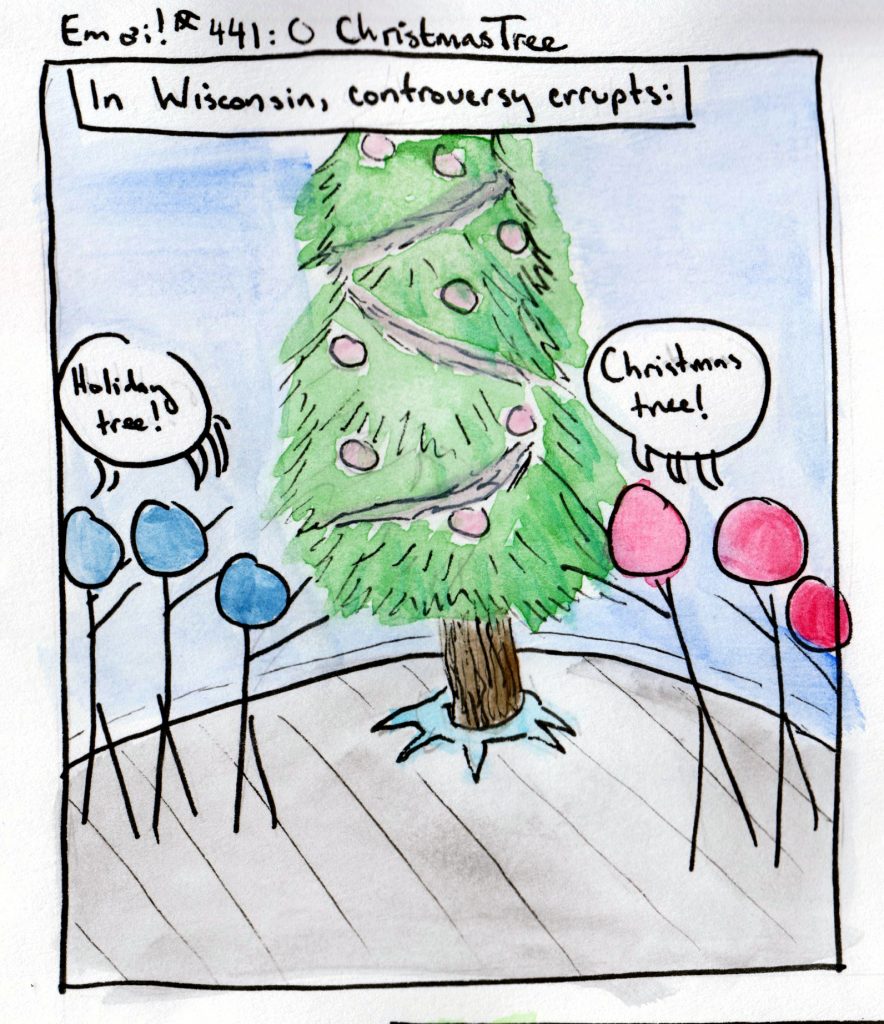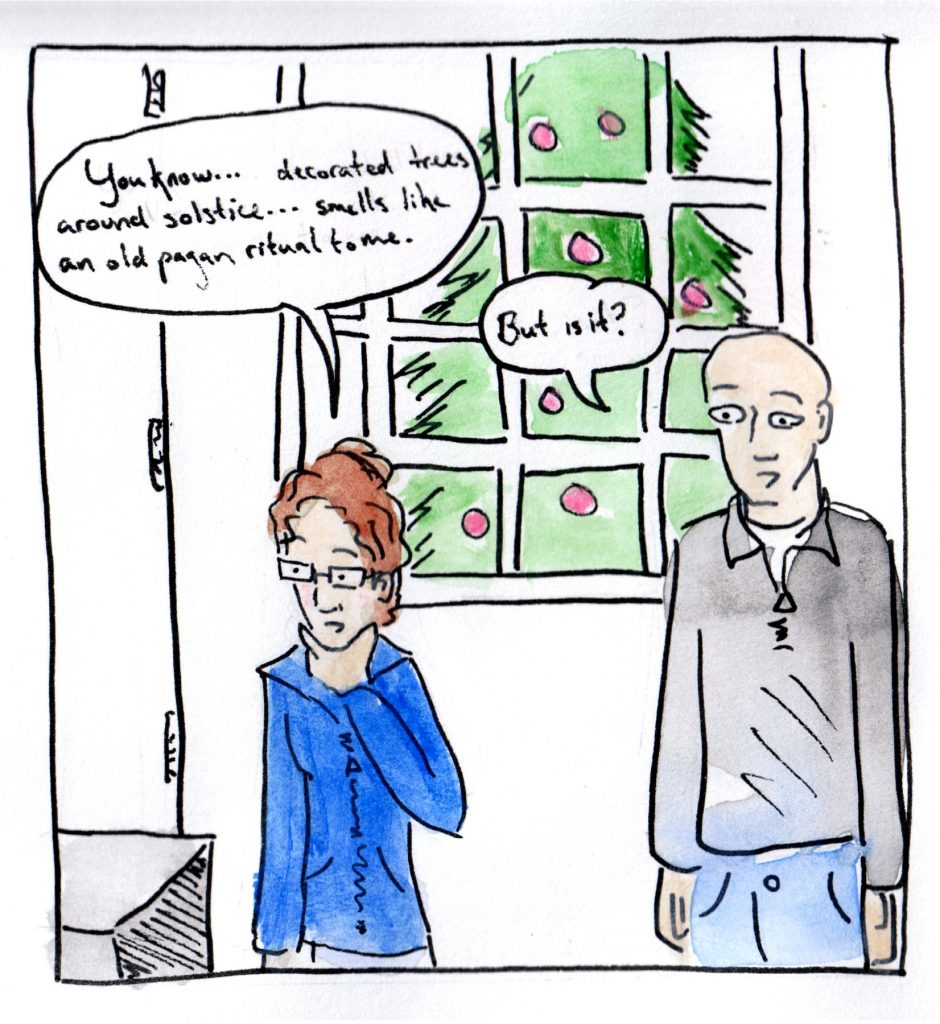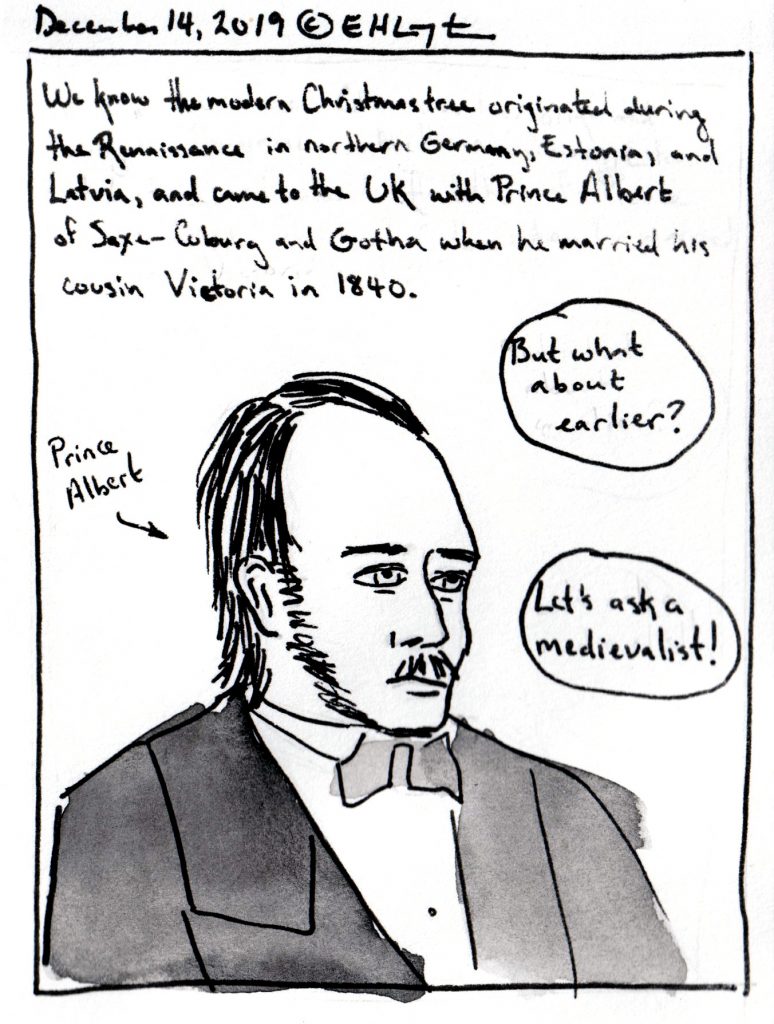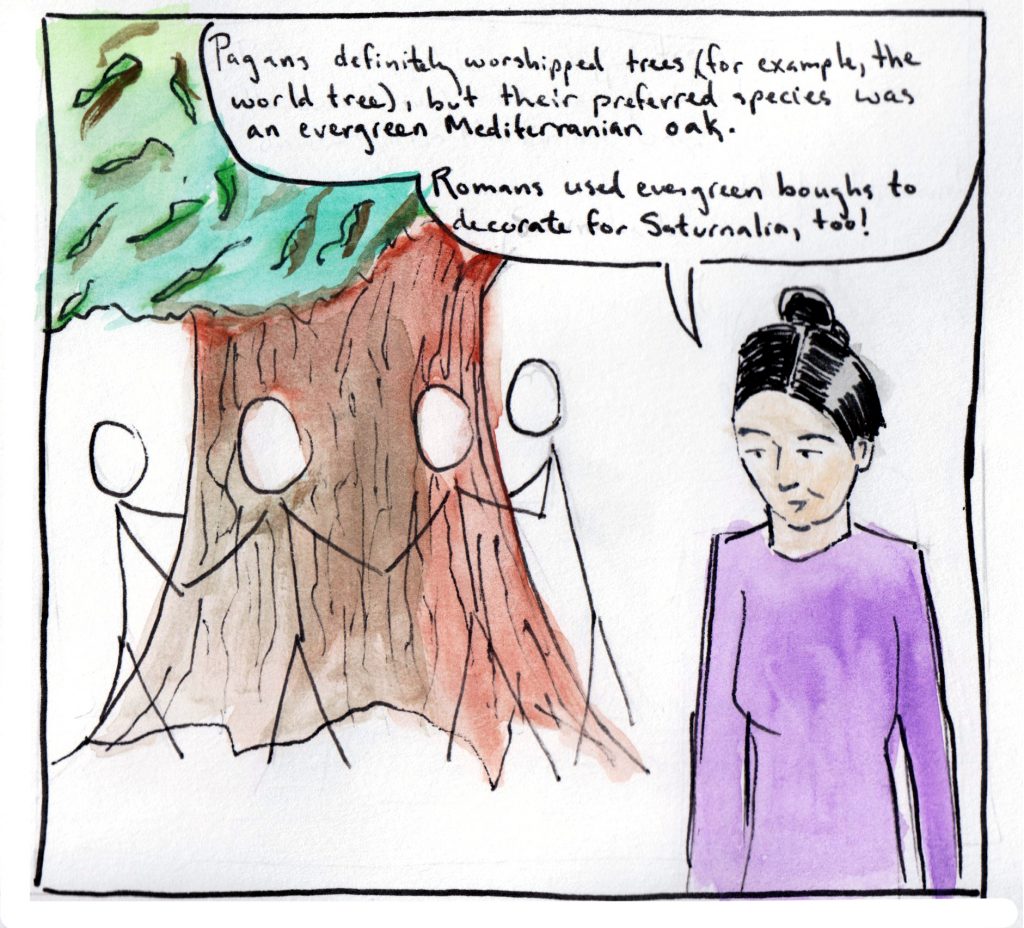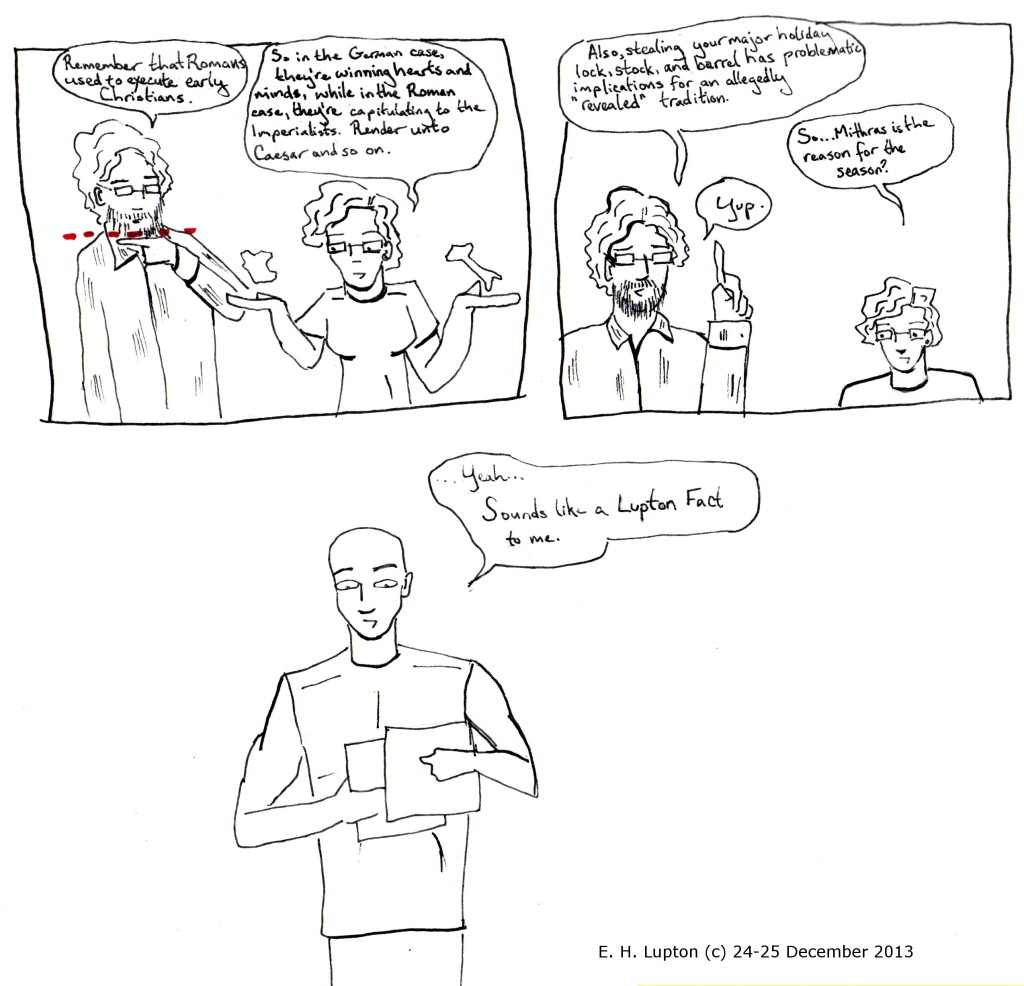So: true story about the political situation here in Wisconsin. My actual sequence of thoughts about this:
- This is the stupidest thing I have ever heard of.
- Calling it a “holiday tree” doesn’t make me as a non-Christian feel more included. It’s a tree used to celebrate a Christian holiday. Why do we even have one at the capital?
- (After some research) Huh! Actually, the history of Christmas trees is not as straightforwardly Christian as I assumed. The pagan aspect is actually pretty neat.
- This is still the stupidest thing I have ever heard of.
Hey Robin Vos, I have an offer, on behalf of the liberals of Wisconsin: If we let you call it a Christmas tree, could you pass some bills to decarbonize the economy, make electric cars easier to buy, maybe add in some incentives for all the farmers to feed their cows seaweed to reduce methane emissions?
That idiocy aside, I hope you’re all having a good winter holiday season, whichever you choose to celebrate–Yalda, Hanukkah, Christmas, Yule, Saturnalia, Kwanzaa… I’m sure I’m missing a few.
We opted not to do a Christmas card this year; after an autumn beset by illness (mine and that of others, culminating in spending ten hours throwing up last week from a norovirus), I opted to put my limited energy toward other projects (good news is I finished draft #2 of my new novella and it has gone to my beta reader). However I have greatly enjoyed all the cards I’ve received from you all! Hopefully next year we’ll get our acts together in time and I’ll have something to send out.
Side note on the comic: The tree in the sixth panel is growing out of a skull because in some traditions, the wood that the cross was made from came from a tree grown from seeds of the tree of knowledge that were planted on Adam’s grave (reference the Golden Legend if you’re curious about this). There was originally text discussing this, but it was cut for space. This is already a really long and wordy comic. Also, sorry for all the typos etc. I swear I remember how to read and write.
We’ll file this one under GT4989 L86 2019, for Manners and customs (General)–Customs relative to public and social life–Festivals. Holidays–Special days and periods of time–Christmas–Special customs–Christmas trees.
Relevant previous comic, if you’re interested: #392: Such Truth.
Final note, a new weird little poem/microfic got published at SlippageLit.

